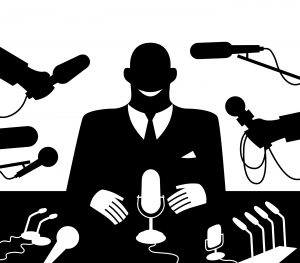In public relations, the “holy grail” is getting our client a meeting with the media with expectations of having a magnificent story result. To help our customers plan for meetings, we frequently give media preparing to key individuals inside the association. Note pad and recorder: Writer’s tools. This incorporates those individuals past the CEO who are agreeable, friendly, proficient, great communicators and who might do well in meeting circumstances.
The journalist’s perspective
Amid our preparation, we get a kick out of the chance to incorporate a correspondent or columnist as a major aspect of the session. A columnist brings an important point of view that originates from being on the “opposite side” as the questioner. (Also, it’s dependably a decent refresher for us PR experts to hear again what works and doesn’t work from the columnist’s point of view.)
Notwithstanding the “genuine living” stories and tips that correspondents convey to our media instructional courses, we give apparatuses and procedures to controlling the message, we push the significance of arrangement and we invest energy evaluating different meetings. We additionally set aside a few minutes for meeting hone.
The role of the PR person
Another essential segment of the media preparing is to help our customers better comprehend the part of the PR proficient all the while. Some of our customers have inward PR individuals on staff that we organize with and different customers depend on us for these administrations. In any case, our occupation as PR individuals is to screen every meeting opportunity that goes along. We ask the correspondent inquiries like:
- What is the story about?
- What is the angle?
- What type of information are you looking for?
- Who else are you talking to for the article?
- When is the deadline?
- How long will the interview last?
We likewise give whatever other vital data to our customer about the production or media outlet. From the majority of this data, we can then figure out will’s identity the best illustrative from our customer’s organization to address the theme completely. It’s not generally the CEO. What’s more, it’s not your PR individuals either. The media like got notification from the individual nearest to the topic for the meeting.
Another objective of our own is to make it simple for the correspondent to do his or her story. This is a piece of the relationship building we’ve expounded on in past posts. The less demanding we can make it for the columnist—which implies giving the data we said we would, sending extra assets or presents if necessary, and following up—the more probable that this correspondent will call upon the customer again for a future story opportunity.
Once the meeting is planned, we must work with the customer to ensure s/he is set up for the meeting.
The interview
Most customers welcome the chance to be met by the media with open arms. There are others, be that as it may, who don’t savor the spotlight very to such an extent. In some cases they require a smidgen of cajoling. Despite the fact that these customers may do greatly well in meetings, they see them as an essential abhorrence—something they need to do, however don’t really cherish, as an aspect of their responsibilities.
When get ready for a current media instructional meeting, I went over a blog entry by Seth Godin entitled, “How To Be Talked with.” Seth’s posts, however concise, are constantly adroit and this one was no special case. I knew it was a diamond worth sharing since it puts an entire alternate point of view on the meeting. His first run says it all: “They call it giving a meeting, not taking one… in case you’re not anxious to share your point of view, don’t try appearing.” Sounds fairly brutal, however it’s a word of wisdom. If I somehow managed to revamp his first govern in a more positive manner, it would go this way:
Take a stab at taking a gander at the meeting as an opportunity to share a story, to share your energy. Let your energy about your new item, new program, whatever to come through in the meeting. This is your chance to let the world think about it.
It backpedals to the significance of narrating. Everybody has a story to share. In case you’re not amped up for sharing your story amid a meeting, don’t do it. All things considered, it will be an exercise in futility for the columnist and you.
Practice Makes Perfect
No measure of media preparing can substitute for the genuine article. Yet, as it is with such a variety of things, meetings get less demanding and more agreeable the more you do them. So when your next meeting opportunity emerges, grasp it! Be bona fide. Be fascinating. Share your enthusiasm. Recount your story.
If you do it well, chances are, you’ll be called on to do it again and again.
If you want to learn more here is Murray Newlands Media Training Guide for Executives.

